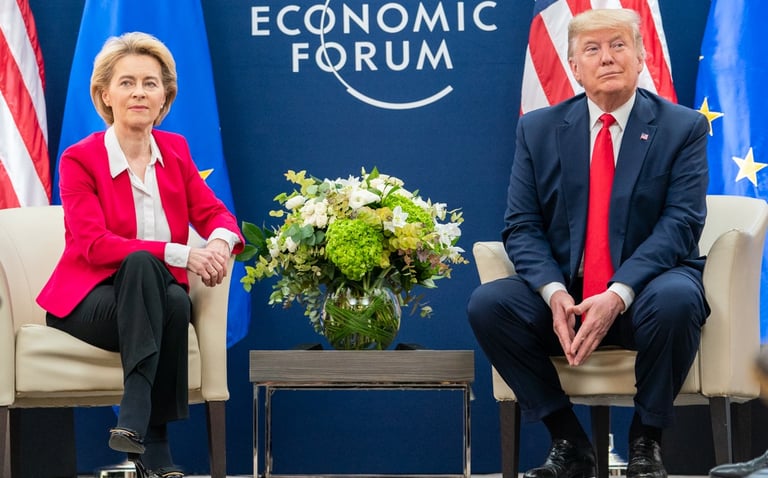Trump-EU Trade Talks 2025 15% Tariff Deal Discussed in Scotland
On July 27, 2025, Trump and EU President von der Leyen met in Scotland to discuss a 15% tariff deal aimed at easing U.S.–EU trade tensions
By Raja Awais Ali
7/27/20251 min read


In a major move to ease global trade tensions, U.S. President Donald Trump and European Commission President Ursula von der Leyen met on July 27, 2025, at the Turnberry Golf Resort in Scotland to discuss a new trade agreement between the United States and the European Union.
At the center of the negotiations is a proposed 15% tariff on select EU goods entering the U.S. market. This would replace the previously threatened 30% tariff, which had sparked concern among EU member states and global markets. Both sides view the reduced rate as a potential compromise to avoid a broader trade conflict.
President Trump emphasized that the talks are focused on “bringing fairness to international trade,” while EU leaders seek to protect European exports and prevent retaliatory tariffs. The European Commission had previously warned that a 30% tariff would have triggered countermeasures, potentially affecting U.S. agricultural and industrial exports.
This high-profile meeting in Scotland marks a critical moment for transatlantic relations. Sources close to the negotiations report that the chances of reaching a finalized agreement remain “50–50,” with talks possibly continuing into Monday.
The outcome of the meeting could have far-reaching effects on global trade. A successful deal may boost investor confidence, reduce economic uncertainty, and strengthen ties between Washington and Brussels. On the other hand, failure to reach an agreement could lead to tariff hikes and strained political relations.
The talks are being closely monitored by international markets and business leaders. Both sides are expected to release an official statement within the next 24 to 48 hours.
This potential trade breakthrough comes at a time when the global economy is still recovering from recent supply chain disruptions and inflationary pressures. The outcome of these talks could signal a new direction for U.S.–EU cooperation in a changing economic world.